Welcome to our free classical music site

Do you write about classical music? Are you a blogger? Want to team up with Classical Connect? Send us a message, let's talk!

Do you write about classical music? Are you a blogger? Want to team up with Classical Connect? Send us a message, let's talk!
This Week in Classical Music: August 12, 2024. Through the Centuries. This week covers four centuries of music: the oldest one, Heinrich Ignaz Biber, was born in 1644, and the most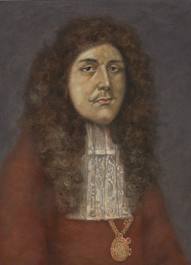 recent, Lucas Foss, in 1922 (he died in the 21st century, in 2009). There were too many in between, but we’ll mention some. Let’s start with Biber, a Bohemian-Austrian composer born on August 12th of 1644 in Wartenberg, Bohemia, then part of the Hapsburg Empire, now Stráž pod Ralskem in the Czech Republic. A highly reputable violinist, he was employed in courts of Graz, Olmütz (now Olomouc), Kremsier (now Kroměříž), and eventually, by the Archbishop of Salzburg, where one hundred years later Mozart would also be employed. Biber stayed in Salzburg for the rest of his life, eventually becoming the Kapellmeister. The finest or at least the most famous music composed by Biber was collected in his Mystery (sometimes called Rosary) Sonatas, in German Rosenkranzsonaten,15 short sonatas for the violin and continuo. Here’s the 3rd of the sonatas, The Nativity. Franzjosef Maier plays a Baroque violin; he’s accompanied by the organ, cello and theorbo, all of the Baroque era.
recent, Lucas Foss, in 1922 (he died in the 21st century, in 2009). There were too many in between, but we’ll mention some. Let’s start with Biber, a Bohemian-Austrian composer born on August 12th of 1644 in Wartenberg, Bohemia, then part of the Hapsburg Empire, now Stráž pod Ralskem in the Czech Republic. A highly reputable violinist, he was employed in courts of Graz, Olmütz (now Olomouc), Kremsier (now Kroměříž), and eventually, by the Archbishop of Salzburg, where one hundred years later Mozart would also be employed. Biber stayed in Salzburg for the rest of his life, eventually becoming the Kapellmeister. The finest or at least the most famous music composed by Biber was collected in his Mystery (sometimes called Rosary) Sonatas, in German Rosenkranzsonaten,15 short sonatas for the violin and continuo. Here’s the 3rd of the sonatas, The Nativity. Franzjosef Maier plays a Baroque violin; he’s accompanied by the organ, cello and theorbo, all of the Baroque era.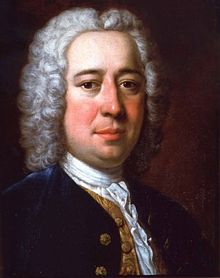
Two more composers were born in the 17th century this week: Nicola Porpora, in 1686, and Maurice Greene, in 1696. Porpora, born in Naples on August 17th of 1686, was one of the most important opera composers of the era, first challenging Alessandro Scarlatti in Naples, and then becoming Handel’s competitor in London. He was also a famous music teacher: his pupils included the castrati Farinelli and Caffarelli, and also Haydn. Porpora composed more than 50 operas, plus oratorios, cantatas and instrumental music. Here’s the aria In Amoroso Petto from Porpora’s opera Arianna In Nasso. Simone Kermes is the soprano, Vivica Genaux – the mezzo. Cappella Gabetta is conducted by Andrés Gabetta.
Maurice Green, born in London on August 12th of 1696 was an English composer known for his “anthems,” short sacred choral works. Lord, Let Me Know Mine End (here) is his most famous composition.
If three composers were born in the 17th century, only one comes from the 18th: Antonio Salieri, famous for all the wrong reasons. Three Frenchmen were born in the 19th century, Benjamin Godard, on August 18th of 1849, Gabriel Pierné, on August 16th of 1863, in Metz, and at the end of the century, on August 15th of 1890, Jacques Ibert. Of the three, Ibert seems to us to be the most interesting. The 20th century gave us only one composer, Lucas Foss. Foss was born in Berlin on August 15th of 1922 into a Jewish family (Benjamin Godard was also Jewish). Foss’s family left for Paris as soon as the Nazis came to power, and in 1937 they moved to the US. Foss was a prodigy, a talented composer, a lifelong friend of Leonard Bernstein, a teacher, music director and much more. We’ll write about him in detail next year.
PermalinkThis Week in Classical Music: August 5, 2024. Guillaume Dufay. Just last week we mentioned the troublesome fact regarding Early music composers, especially the pre-Renaissance ones: we practically never know their birthdays, and here comes a possible exception in the person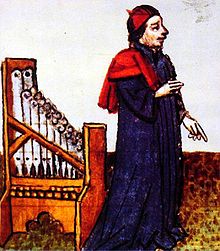 of Guillaume Dufay: with some degree of certainty and based on existing documents, musicologists seem to have determined that he was born on August 5th of 1397. At a time when the individuality of the artists was often obscured and considered unimportant, Dufay was acknowledged as the greatest composer of his generation. Dufay, whose name during his time was written Du Fay, had a long and particularly eventful life. He was born in Beersel near Brussels and died at the age of 77 in Cambrai, on November 27th of 1474. As a boy, he studied at the Cathedral of Cambrai. His musical talents were acknowledged from an early age, and cathedral officials allowed Dufay to join the bishop of Cambrai’s retinue on his many travels. On one such trip, he was noticed by Carlo Malatesta, the ruler of Rimini, who brought Dufay to Italy sometime around 1420. He stayed in Rimini for about four years, returning to Cambrai in 1424. Two years later he was back in Italy, this time in Bologna, in the service of Cardinal Louis Aleman. His stay in Bologna was short, as in 1428 the Cardinal and his court, including Dufay, were expelled from the city. Dufay went to Rome, and, by then a well-known musician, he was hired by the papal chapel (choir). He served there till 1433, first to Pope Martin V, and after Martin’s death, to Pope Eugene IV. While in Rome, he asked for and received several “benefices,” clerical positions in churches that provided him with additional income. A large body of work is attributed to the years of Dufay’s sojourn in Rome. In 1434 Dufay joined the Court of Amédée VIII, the Duke of Savoy, then one of the most powerful duchies of Europe, which included not just the French territories by the same name but also Aosta and much of Piedmont in Italy. Again, his stay in Savoy was brief: one year later he was back in the service of Pope Eugene IV but this time in Florence, as, due to the extremely turbulent church politics, the pope was driven out of Rome. In 1437 the papal court moved to Bologna, and at about that time, Dufay received a very important benefice, the cannon’s position at the Cambrai Cathedral.
of Guillaume Dufay: with some degree of certainty and based on existing documents, musicologists seem to have determined that he was born on August 5th of 1397. At a time when the individuality of the artists was often obscured and considered unimportant, Dufay was acknowledged as the greatest composer of his generation. Dufay, whose name during his time was written Du Fay, had a long and particularly eventful life. He was born in Beersel near Brussels and died at the age of 77 in Cambrai, on November 27th of 1474. As a boy, he studied at the Cathedral of Cambrai. His musical talents were acknowledged from an early age, and cathedral officials allowed Dufay to join the bishop of Cambrai’s retinue on his many travels. On one such trip, he was noticed by Carlo Malatesta, the ruler of Rimini, who brought Dufay to Italy sometime around 1420. He stayed in Rimini for about four years, returning to Cambrai in 1424. Two years later he was back in Italy, this time in Bologna, in the service of Cardinal Louis Aleman. His stay in Bologna was short, as in 1428 the Cardinal and his court, including Dufay, were expelled from the city. Dufay went to Rome, and, by then a well-known musician, he was hired by the papal chapel (choir). He served there till 1433, first to Pope Martin V, and after Martin’s death, to Pope Eugene IV. While in Rome, he asked for and received several “benefices,” clerical positions in churches that provided him with additional income. A large body of work is attributed to the years of Dufay’s sojourn in Rome. In 1434 Dufay joined the Court of Amédée VIII, the Duke of Savoy, then one of the most powerful duchies of Europe, which included not just the French territories by the same name but also Aosta and much of Piedmont in Italy. Again, his stay in Savoy was brief: one year later he was back in the service of Pope Eugene IV but this time in Florence, as, due to the extremely turbulent church politics, the pope was driven out of Rome. In 1437 the papal court moved to Bologna, and at about that time, Dufay received a very important benefice, the cannon’s position at the Cambrai Cathedral.
While serving in Savoy and later at the papal court, Defay developed many valuable connections: with the Burgundy court, where he met another famous composer, Gilles Binchois, and with the Estes, Dukes of Ferrara. Ferrara was an important musical center, second only to the pope’s chapel; Defay visited the city in 1437.
Things were getting even more confusing in Italy, where in 1439 Pope Eugene IV was deposed and Defay’s former patron, Duke Amédée of Savoy was proclaimed Pope (or rather antipope) Felix V. To avoid problems with his warring benefactors, Defay left the papal court and returned to Cambrai, assuming the canonicate. That marked the beginning of the most stable period of Dufay’s life: he stayed in Cambrai for 11 years, till 1450. In 1449 Pope Felix V abdicated, and the politics of Rome calmed down; Dufay started traveling again. In 1450 he went to Turin, to visit Duke Amédée, no longer the Pope (Amédée died shortly after their meeting). In 1452 Dufay went to Savoy again and stayed there for six years, till 1458, this time at the service of Duke Louis
In 1558 Dufay returned to Cambrai and his position of the cannon. A famous composer, he was visited by many notables, including composers Ockeghem and Antoine Busnois. Among the more significant compositions of the period was his Requiem Mass, now lost, unfortunately. Dufay was buried in the Cambrai Cathedral, which was demolished during the French Revolution. His tombstone was later found and is now in a museum in Lille.
Here's Gloria, from Dufay’s Missa de San Anthonii de Padua. The Binshois Concort is directed by Andrew Krikman.Permalink
This Week in Classical Music: July 29, 2024. Rott and Ingegneri. Hans Rott was born this week, on August 1st of 1858. This composer, who died at 25 and was mad for the last several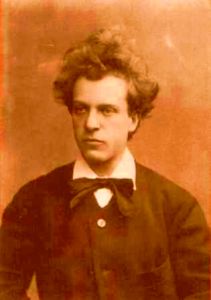 years of his tragically short life, continues to fascinate us. Clearly, he was a major talent, and who knows how he would’ve developed, but even within the limited scope of his output, one can discern musical ideas Mahler would develop some years later. We’ve written about him several times, here, for example. We are also happy to report that his Symphony in E major is being performed and recorded more often, the latest time being in 2021 for Deutsche Grammophon with the excellent Jakub Hrůša leading the Bamberger Symphoniker.
years of his tragically short life, continues to fascinate us. Clearly, he was a major talent, and who knows how he would’ve developed, but even within the limited scope of his output, one can discern musical ideas Mahler would develop some years later. We’ve written about him several times, here, for example. We are also happy to report that his Symphony in E major is being performed and recorded more often, the latest time being in 2021 for Deutsche Grammophon with the excellent Jakub Hrůša leading the Bamberger Symphoniker.
There are many very talented composers of the Renaissance that we have never written about, for the only reason that their birthdays are unknown, so they fall outside of the framework of the “classical music this week.” One of these composers is Marc'Antonio Ingegneri. He’s mostly forgotten these days, unjustly so in our opinion. If he is remembered at all, it is as the teacher of the great Claudio Monteverdi, but in his days, he was the leading composer of Cremona, one of the musical centers of Italy.
Ingegneri was born in Verona in 1535 or 1536, which made him about 10 years younger than Palestrina, three years younger than Orlando di Lasso, and about the same age as Giaches de Wert. As is usually the case with the composers of that era, we know little about his early days. He was a choirboy at the Verona cathedral and probably took lessons from Vincenzo Ruffo, a noted composer, also a Veronese, who was active as a music reformer, implementing an edict of the Council of Trent which stated that words in church music should be legible, a requirement that almost killed the polyphonic mass. Ingegneri left Verona in his early 20s and for a while played the violin in the band of the Scuola Grande di San Marco in Venice. It’s likely that in the 1560s he went to Parma to study with Cipriano de Rore, one of the noted composers of the mid-16th century. Sometime around 1566, Ingegneri moved to Cremona and soon after had his Primo libro de madrigali a quattro voci published. He was active in the music-making at the Cremona Cathedral, and in 1580 was made the maestro di cappella. Sometime soon after he became the teacher of the young Monteverdi, who was born in Cremona and was at the time 15 or 16 years old. It’s clear that Ingegneri was famous outside of Cremona, as he dedicated books of madrigals to his patrons in Milan, Parma, Verona, and even Vienna. His music was published in many cities, such as Venice, Milan, Brescia, Ferrara and Rome. For about a decade from the mid-1570s to the mid-1580s Ingegneri composed mostly secular madrigals, but then reverted to church music. He was a good friend of bishop Nicolò Sfondrato, later Pope Gregory XIV who ruled the Catholic church for just 11 months. Ingegneri died in Cremona on July 1st of 1592.
Here is Ingegneri’s motet for the feast of the Assumption of Mary, Vidi speciosam. The Choir of Girton College, Cambridge, and the Historic Brass of Guildhall School are led by Gareth Wilson.Permalink
This Week in Classical Music: July 22, 2024. AlfredoCasella. About this time last year, we planned to celebrate Italian composer Alfredo Casella’s 100th anniversary but got involved with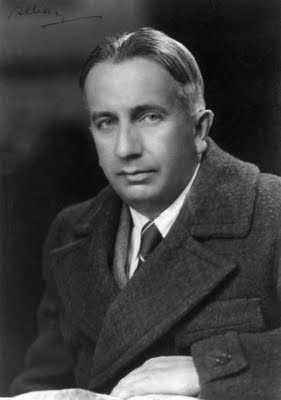 the lives of two German composers of the Nazi era and their very divergent paths: Carl Orff and Hanns Eisler. Eisler’s life is so fascinating that we returned to it this year with some added color provided by Hanns’s brother, a Comintern agent, and sister, one co-founder of the Austrian communist party and co-leader of the German one. But let’s get back to Alfredo Casella who was born on July 25th of 1883 in Turin. Not unlike Orff and Eisler, he lived through one of the most turbulent periods in modern history: the First World War, Mussolini’s fascist regime, and then the Second World War. Casella entered the Paris Conservatory in 1896 to study piano and composition, and while there he met "everybody": Debussy and Ravel, Stravinsky and Enescu, de Falla and Richard Strauss. He returned to Italy during the Great War and for some time taught at the Accademia di Santa Cecilia in Rome. He became involved in the new "futurist" music and even wrote a "futurist" piece, Pupazzetti (Puppets), here. But Casella’s interest in historical Futurism was fleeting. In 1917 he, together with composers Ottorino Respighi and Gian Francesco Malipiero founded the National Music Society to perform new Italian music and to "resurrect our old forgotten music." In 1923 Casella, the poet and playwright Gabriele D'Annunzio and the same Malipiero organized Corporazione delle nuove musiche (CDNM), again with the goals of promoting modern Italian music as well as reviving the old. CDNM brought to the then-provincial Italy a number of new composers, including Béla Bartók and Paul Hindemith; CDNM’s concerts also featured music of Schoenberg, Stravinsky, Poulenc, Kodály and other contemporaries.
the lives of two German composers of the Nazi era and their very divergent paths: Carl Orff and Hanns Eisler. Eisler’s life is so fascinating that we returned to it this year with some added color provided by Hanns’s brother, a Comintern agent, and sister, one co-founder of the Austrian communist party and co-leader of the German one. But let’s get back to Alfredo Casella who was born on July 25th of 1883 in Turin. Not unlike Orff and Eisler, he lived through one of the most turbulent periods in modern history: the First World War, Mussolini’s fascist regime, and then the Second World War. Casella entered the Paris Conservatory in 1896 to study piano and composition, and while there he met "everybody": Debussy and Ravel, Stravinsky and Enescu, de Falla and Richard Strauss. He returned to Italy during the Great War and for some time taught at the Accademia di Santa Cecilia in Rome. He became involved in the new "futurist" music and even wrote a "futurist" piece, Pupazzetti (Puppets), here. But Casella’s interest in historical Futurism was fleeting. In 1917 he, together with composers Ottorino Respighi and Gian Francesco Malipiero founded the National Music Society to perform new Italian music and to "resurrect our old forgotten music." In 1923 Casella, the poet and playwright Gabriele D'Annunzio and the same Malipiero organized Corporazione delle nuove musiche (CDNM), again with the goals of promoting modern Italian music as well as reviving the old. CDNM brought to the then-provincial Italy a number of new composers, including Béla Bartók and Paul Hindemith; CDNM’s concerts also featured music of Schoenberg, Stravinsky, Poulenc, Kodály and other contemporaries.
The 1920s was a time of great interest in European musical patrimony, the interest often tinged with nationalism. Like Respighi, who wrote The Birds and Ancient Airs and Dances, and Stravinsky (Pulcinella), Casella created pieces that echoed the music of his predecessors, in his case Scarlattiana (1926), an orchestral piece based on Domenico Scarlatti’s sonatas. And so, it was only natural that Casella became involved in the research and promotion of the music of Vivaldi. Ezra Pound and the violinist Olga Rudge, Pound’s companion, were also actively involved in reviving Vivaldi’s music. Pound at that time was a strong proponent of fascism; Casella too was a follower of Mussolini, especially his effort to create a national, state culture based on Italian cultural “self-sufficiency.” Casella of course was not the only one being seduced by fascism: most of the Italian cultural elites of the time, from D'Annunzio to painters Filippo Marinetti, Mario Sironi and even to some extent De Chirico, were either supporters of Mussolini or were strongly influenced by fascist ideals.
Casella’s wife was Jewish of French descent (they married in 1929), and when in 1938 Mussolini, under pressure from Hitler, passed racial laws, the life of the pro-regime Casella turned upside down. He lived in constant fear that his wife would be deported; at some point they split and Yvonne, Casella’s wife, went into hiding. On top of that, in 1942 he became seriously ill. Casella continued composing and teaching into the 1940s; his last composition was written in 1944, while Italy was a battlefield. It was called Missa Solemnis Pro Pace – a mass for peace. Among his many students was the composer Nino Rota, who wrote Cantico in memoria di Alfredo Casella. And a note for cinephiles: the Italian actress and filmmaker Asia Argento is Casella’s great-granddaughter.
Here's Casella’s Scarlattiana for piano and a small orchestra. Martin Roscoe is on the piano, Gianandrea Noseda conducts the BBC Philharmonic.Permalink
This Week in Classical Music: July 8, 2024. Hanns Eisler, part II. We ended the first part of our Eisler story in 1933 when the Nazis took power in Germany. Eisler’s music was immediately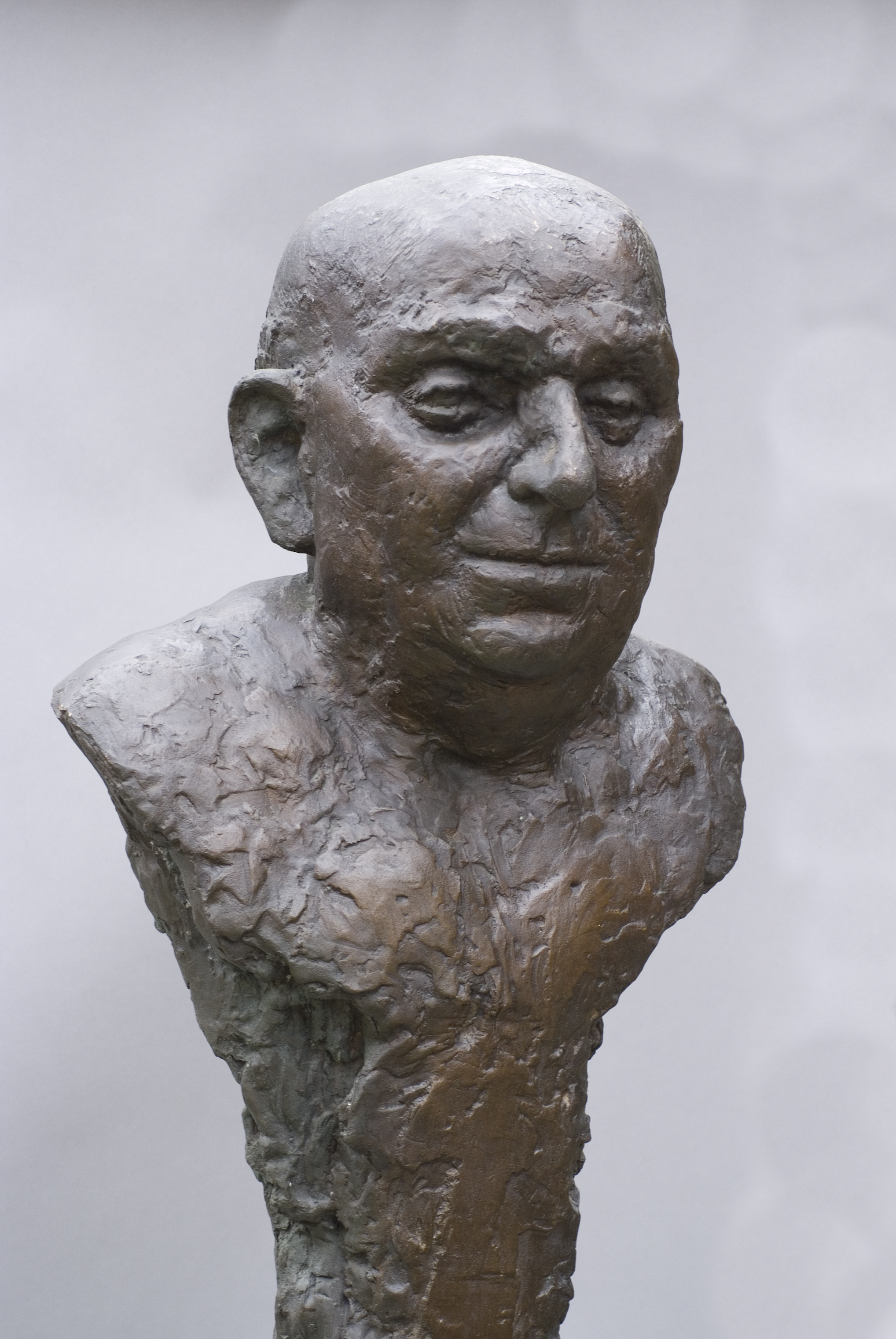 banned, as were his friend Brecht’s plays, and both went into exile. Brecht settled in Denmark while Eisler moved from one place to another, temporarily living in Prague, Vienna, Paris, London, Moscow, Spain in 1937, during the Civil War, and other countries. He also visited the US, twice. In 1938 he permanently moved to the US, where he received a position at the New School for Social Research in New York. In 1942 Eisler moved to California, where Brecht had been living since 1941. They continued their cooperation: Brecht wrote the script for Fritz Lang’s movie, Hangmen Also Die!, and Eisler wrote the music, which was nominated for an Oscar. Eisler wrote music for seven other Hollywood films, receiving another Oscar nomination in 1945. He continued writing music for films for the rest of his creative life, 40 of them altogether – that was a major part of his creative output. In 1947 he published a book, Composing for the Films, co-written with another German exile, the philosopher Theodor Adorno.
banned, as were his friend Brecht’s plays, and both went into exile. Brecht settled in Denmark while Eisler moved from one place to another, temporarily living in Prague, Vienna, Paris, London, Moscow, Spain in 1937, during the Civil War, and other countries. He also visited the US, twice. In 1938 he permanently moved to the US, where he received a position at the New School for Social Research in New York. In 1942 Eisler moved to California, where Brecht had been living since 1941. They continued their cooperation: Brecht wrote the script for Fritz Lang’s movie, Hangmen Also Die!, and Eisler wrote the music, which was nominated for an Oscar. Eisler wrote music for seven other Hollywood films, receiving another Oscar nomination in 1945. He continued writing music for films for the rest of his creative life, 40 of them altogether – that was a major part of his creative output. In 1947 he published a book, Composing for the Films, co-written with another German exile, the philosopher Theodor Adorno.
That same year, 1947, he was brought before the Congress’s Committee on Un-American Activities. One of his accusers was his sister, Ruth Fischer, who by then had turned into a radical anti-Stalinist. She testified before the committee against her brothers, Hanns and Gerhart. She claimed that both of them were Soviet agents. Hanns, while a committed communist who lied on his US visa application, probably wasn’t an agent, whereas Gerhart was not only a Comintern agent but also a spymaster. Hanns was a well-known figure in the Hollywood German community and, as a noted composer active in leftist causes, in Europe as well. A worldwide campaign on his behalf was organized and led by many prominent intellectuals, among them Charlie Chaplin, Thomas Mann, Albert Einstein, Pablo Picasso, Henri Matisse, Igor Stravinsky, Aaron Copland and Jean Cocteau (Stravinsky is a surprising name on this list – he wasn’t known for his liberal views). Despite all that, Hanns Eisler was expelled from the US in March of 1948. He returned to Vienna, and, after a couple of trips to East Berlin, he settled in the German Democratic Republic for good. In 1949 he composed a song, Auferstanden aus Ruinen (Risen from the ruins) which became the country’s national anthem. Eisler was elected to the Academy of Arts and, for a while, feted as the most important composer of the Republic. Brecht moved to East Berlin in 1949 and established a theater company, the Berliner Ensemble. Together, Brecht and Eisler worked on 17 plays. While much of his previous output was dedicated to music of protest, in East Germany Eisler felt compelled to write music supporting the regime. No chamber music was written – that was too bourgeois. So the main output was “applied music“ for theater and movies, and songs, many for children and some for official occasions. Not everything was going well for Eisler: he wanted to compose an opera on the Faust theme, Johannes Faustus, and wrote a libretto for it, but the libretto was severely criticized in the press. Eisler got depressed and dropped the idea. Then, in 1956, Brecht died, and that depressed Eisler even more. He was encouraged by the 20th Congress of the Soviet Communist Party and its promise of de-Stalinization, but that didn’t have much effect on the repressive regime of East Germany. A lifelong communist, Eisler became disconnected from the realities of communist Germany. He suffered two heart attacks, the second killing him in September 1962. He was buried next to Brecht in Berlin.
Here, from the last pre-Nazi year, 1932, is Eisler’s Kleine Simphonie. Deutsches Symphonie-Orchester Berlin is conducted by Hans Zimmer.Permalink
This Week in Classical Music: July 8, 2024. Mahler, Eisler. Last week, we wanted to write about Hanns Eisler who was born on July 7th but were sidelined by the 100th anniversary of the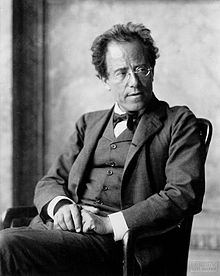 great cellist János Starker. July 7th was also the anniversary of Gustav Mahler, and we couldn’t miss it. Mahler was born in 1860; his last completed symphony, no. 9, was written between 1908 and 1909 (he died in 1911, at age 50). The last (fourth), movement of the symphony, Adagio, is one of the greatest pieces of music ever written, bar none. The movement preceding it, Rondo-Burleske, is denoted by Mahler as Allegro assai (Very cheerful) and Sehr trotzig (Very defiant). It’s complex, contrapuntal, and borderline insane, and not cheerful at all. It’s difficult for a conductor to interpret and for an orchestra to play. At the same time, if well done, it leads perfectly into the deathly serenity of the last movement. Here is Claudio Abbado with the Lucerne Festival Orchestra in a live 2010 performance. You can compare it with the interpretation by Pierre Boulez and Chicago, here.
great cellist János Starker. July 7th was also the anniversary of Gustav Mahler, and we couldn’t miss it. Mahler was born in 1860; his last completed symphony, no. 9, was written between 1908 and 1909 (he died in 1911, at age 50). The last (fourth), movement of the symphony, Adagio, is one of the greatest pieces of music ever written, bar none. The movement preceding it, Rondo-Burleske, is denoted by Mahler as Allegro assai (Very cheerful) and Sehr trotzig (Very defiant). It’s complex, contrapuntal, and borderline insane, and not cheerful at all. It’s difficult for a conductor to interpret and for an orchestra to play. At the same time, if well done, it leads perfectly into the deathly serenity of the last movement. Here is Claudio Abbado with the Lucerne Festival Orchestra in a live 2010 performance. You can compare it with the interpretation by Pierre Boulez and Chicago, here.
Now back to Hanns Eisler. Eisler was born in Leipzig, Germany, on July 7th of 1898; his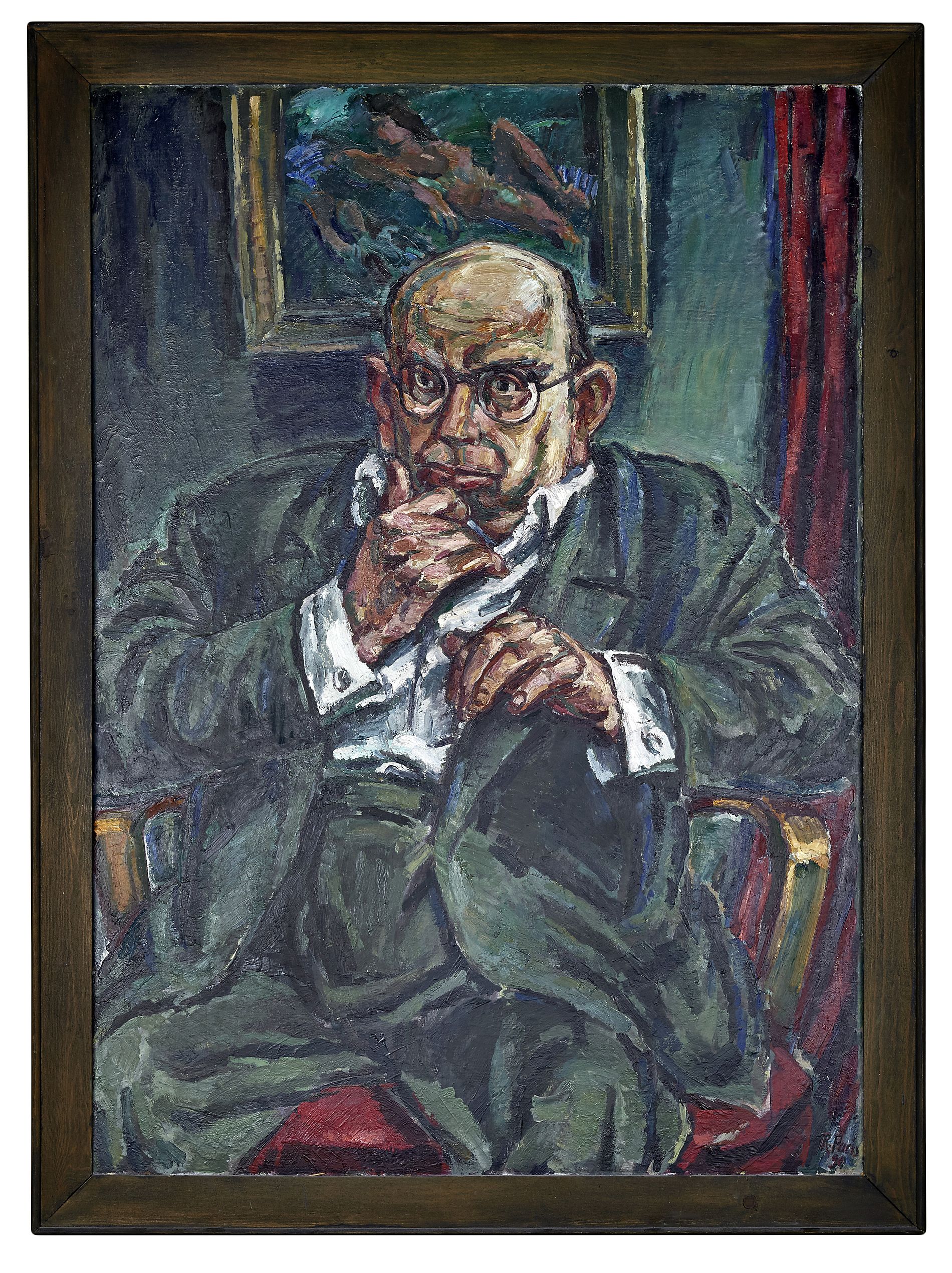 father was Jewish, his mother Lutheran. The family was very political: Hanns’s brother was a prominent communist journalist, while his sister, Elfriede Eisler-Fischer, was a co-founder of the Austrian Communist party. In 1901 the family moved to Vienna. Hanns himself became active in politics at the age of 14, joining a Socialist youth group. During the Great War, Eisler served in the Austrian army. As a boy, he studied the piano on and off and composed some music (he did it even during the war). In 1918 the war was lost, the Austro-Hungarian empire disappeared; Eisler returned to the impoverished Vienna, now the capital of a tiny Austria, looking to continue his musical studies. He was accepted by Arnold Schoenberg, who taught him composition free of charge (Anton Webern sometimes was the substitute teacher). Inculcated in atonality and serialism, Eisler wrote several pieces that sounded very much like his teacher’s, especially the ones written for voice. Here, for example, is Palmström for Voice, Flute, Clarinet, Violin, Viola and Cello, which Schoenberg asked Eisler to write for a performance that also featured Pierrot lunaire (Junko Ohtsu- Bormann is the soprano). Eisler’s piano pieces of the period were light and fresh, as, for example, is the short Andante con moto, op. 3, no.1 (Siegfried Stöckigt is the pianist).
father was Jewish, his mother Lutheran. The family was very political: Hanns’s brother was a prominent communist journalist, while his sister, Elfriede Eisler-Fischer, was a co-founder of the Austrian Communist party. In 1901 the family moved to Vienna. Hanns himself became active in politics at the age of 14, joining a Socialist youth group. During the Great War, Eisler served in the Austrian army. As a boy, he studied the piano on and off and composed some music (he did it even during the war). In 1918 the war was lost, the Austro-Hungarian empire disappeared; Eisler returned to the impoverished Vienna, now the capital of a tiny Austria, looking to continue his musical studies. He was accepted by Arnold Schoenberg, who taught him composition free of charge (Anton Webern sometimes was the substitute teacher). Inculcated in atonality and serialism, Eisler wrote several pieces that sounded very much like his teacher’s, especially the ones written for voice. Here, for example, is Palmström for Voice, Flute, Clarinet, Violin, Viola and Cello, which Schoenberg asked Eisler to write for a performance that also featured Pierrot lunaire (Junko Ohtsu- Bormann is the soprano). Eisler’s piano pieces of the period were light and fresh, as, for example, is the short Andante con moto, op. 3, no.1 (Siegfried Stöckigt is the pianist).
Parallel to being involved with music, Eisler continued to be actively engaged in politics, and that, in turn, strongly affected his composition style. Eisler became a devoted Marxist and joined several radical leftist organizations, first in Austria and then, after moving to Germany in 1925, in Berlin where he applied for membership in the German Communist Party. He became disaffected with the “bourgeois” 12-tonal music and quarreled with Schoenberg who could not accept his student’s political views. Affected by ideology, Eisler switched to composing marches and solidarity songs, including Kominternlied, the unofficial hymn of the Comintern, the Soviet Union-led Communist International. Many of his songs became very popular with the European Left. They contained fighting words, and we should remember that that was the time when the Communists were literally fighting the Nazis on the streets of Germany.
In 1930 Eisler met the playwright Bertolt Brecht, one of the stars of the Left. They became lifelong friends and their cooperation led to several influential theatrical productions. We’ll finish the story of Hans Eisler during the Nazi period, his emigration and, later, his unexpected return to Germany, next week.Permalink